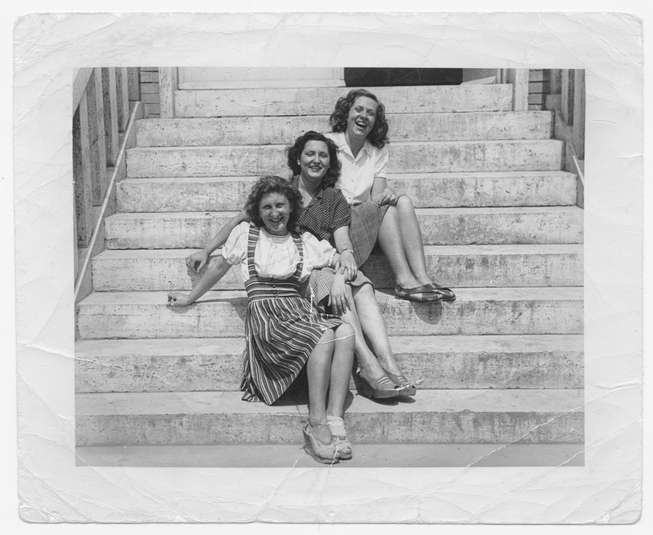]Whether you are a community-action agency, a moderately sized nonprofit, or a large university, you know who your biggest supporters are. They are the men and women who have consistently contributed to your organization over a long period of time. They are the check writers, the advocates, the ambassadors of your vision, the connectors—and they may even be among the volunteers you have been able to mobilize. But no matter what type of organization you work with, it’s important that you recognize the truth of donor mortality.
Take Stock of All You’ve Received
For years, these individuals have been in the background dressed up at your galas. They have introduced you and your staff to their peers and professional colleagues and have assisted at the registration tables for your events. They highlight articles in newspapers or trade journals relevant to your sector and share them with your communications and development staff. They may even go out of their way to send you marketing materials from other organizations that solicit their hard-earned dollars: universities, hospitals, houses of worship, national charities, and more.
Have You Planned for the Worst?
One day, these important supporters will no longer be around. That’s the reality of donor mortality. Do you really want the reason that your organization does not receive a planned gift from them to be because they were never asked? If they have been perennial supporters of your annual fundraising efforts, and the metaphorical bus came and hit them tomorrow, what would happen to your organization? Have you been thanking them properly for their long-term support? Has your operating budget been too reliant on the contributions of living donors to sustain your programs and initiatives? What happens to the passions of your long-term supporters when they pass away, which may also include their in-person contributions of service to your organization? Do their kids even know—or care— about the cause that your organization represents? When donor mortality occurs, will their next-of-kin even know who you are?
Don’t Miss an Opportunity to Discuss Planned Giving with Them!
Even if other nonprofits have already been pursuing your donors, it’s not too late for you to engage them about planned giving. Pitch your mission and show them how they fit into its picture. Even if a potential planned gift will not be realized for several years, you will build a pipeline that can dramatically impact your organization. By approaching your valuable donors about planned giving, you will acknowledge their ongoing support for your organization, validate their efforts to impact the community, and flatter them by letting them know how they fit into your long-term plan. Your organization may be able to fit into their plans as well. Asking long-term donors about planned gifts is rarely ever taken the wrong way, so start the conversation! Donor mortality means that planned giving needs to be an integral part of your fundraising strategy.
Making Your Approach
Pull a list of the individuals and couples who have given consistently over the past decade, regardless of the amount, and reach out with a personalized letter something like this”Mr. and Mrs. Smith, you have been stalwart supporters of our ambitious endeavors, and your generosity over the years embodies the values you are clearly passionate about.As we take stock of our biggest supporters and consider how we will overcome various obstacles over the next decade and beyond, we realize how much we have been able to accomplish because of your ongoing investment in our mission. Because of that, we can also recognize how detrimental it would be to lose your support one day.For this reason, we would like to speak with you about making a planned gift to our organization—a revocable gift that costs you nothing during your lifetime but will have a meaningful impact on the area we serve forever. It would be a disservice to those we serve if we did not ask you to consider naming us in your estate plan.” I sincerely hope that we may have the opportunity to discuss this further with you in person, and I look forward to serving as a steward to your charitable support.”
Navigating Donor Responses
Sometimes the best answer you’ll get is “Thank you, but not right now.” Donors who are interested can move through the process rather quickly—Great! Some prefer a level of anonymity—Totally understandable. Others will be proud to shout your organization’s name from the rooftops and will serve as champions—Welcome to our legacy society. Here is your complimentary bullhorn and honorary marketing department position!
Those on the fence will sit on the idea for a bit before deciding. Don’t be afraid to follow up after a period of time. They could be noncommittal for a range of reasons—from not fully understanding the implications of a planned gift, to potentially not wanting to think about their own demise. It can be helpful to offer them a complimentary meeting with a professional advisor who can answer their questions and remove their reservations. Be courteous, offer help when able, and respect their boundaries if any clear ones appear. Their initial “no” may not be forever, and the “why” behind the “no” is the most important information for your organization.
When donors tell you that they plan to leave their estate in its entirety to their children and that it will be up to them to decide how to use it, they are opening a door for you. If the adult children of these individuals are not on your prospect list, you have just found a reason to reach out and introduce yourself and your organization!
By starting the conversation about planned giving, you can gain more commitments, get your donors and prospects thinking about both their charitable and financial ambitions, and learn more about opportunities that their existing intentions could bring to your organization. Don’t be surprised by donor mortality… prepare for it!
Categories: Relationships, Stewardship


